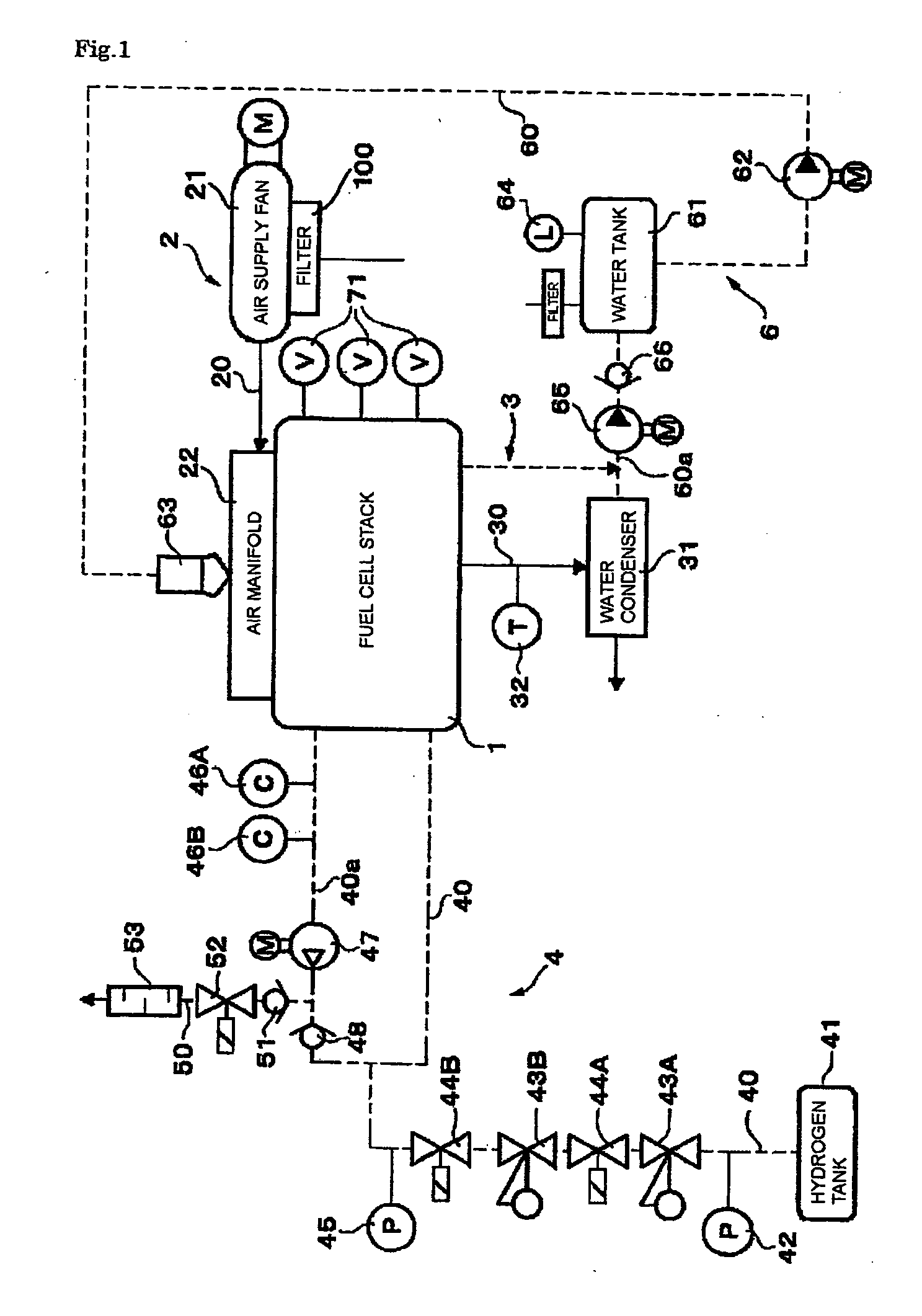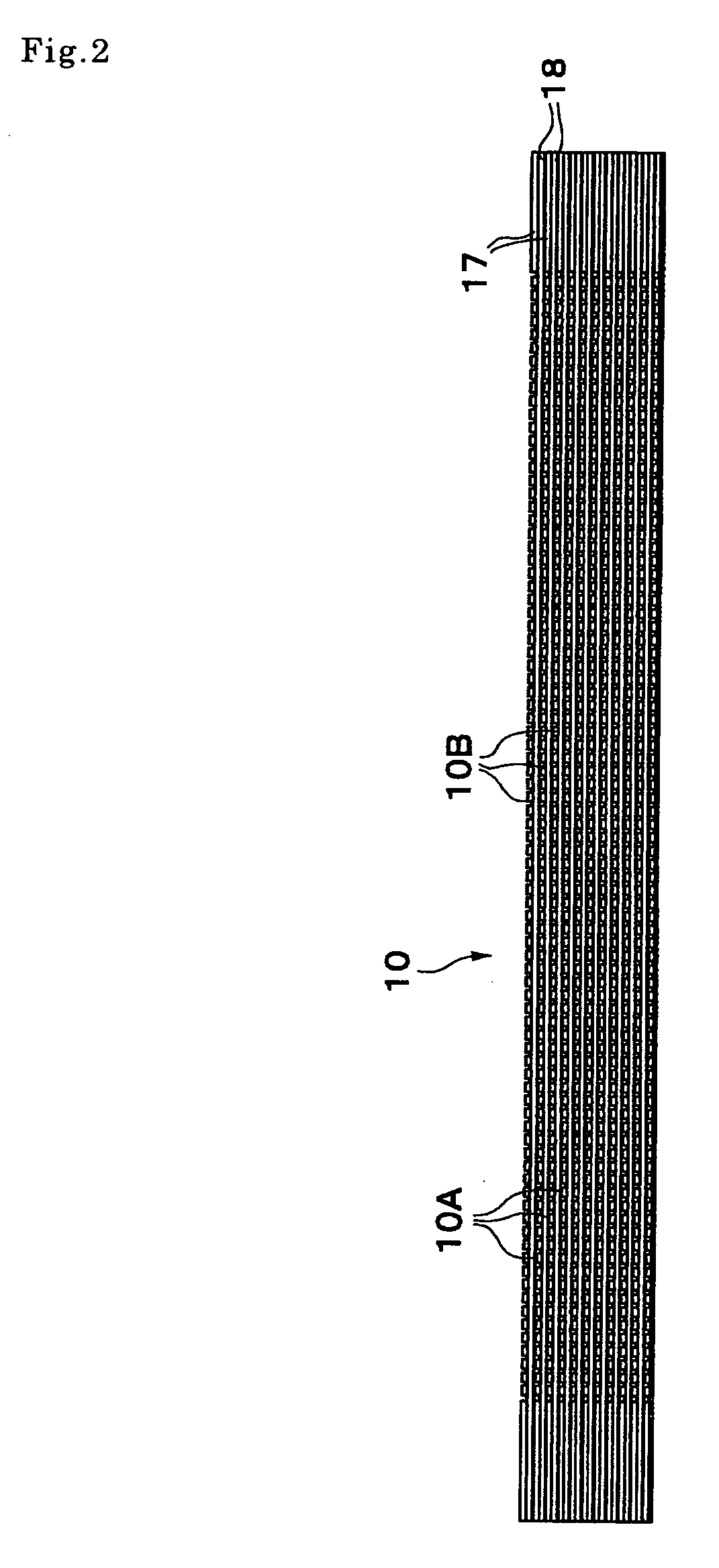Separator and fuel cell using that separator
a separator and separator technology, applied in the field of separators and fuel cells, can solve the problems of difficult operation that requires extreme skill, difficult to ensure the contact area and the air flow at the same time, and the same structure will pose problems, so as to achieve the effect of reducing power collection resistance, high degree of skill, and reducing the manufacturability of not only the separator, but also the fuel cell
- Summary
- Abstract
- Description
- Claims
- Application Information
AI Technical Summary
Benefits of technology
Problems solved by technology
Method used
Image
Examples
first embodiment
[0037] Hereinafter, exemplary embodiments of the present invention will be described with reference to the appended drawings. First, FIGS. 1 to 7 illustrate a first exemplary embodiment of the present invention. FIG. 1 is an example of a diagram of a vehicular fuel cell system which uses a fuel cell stack 1 according to one application of the present invention. The fuel cell stack 1 serves as the main component of the fuel cell system which also includes a fuel cell main portion, a fuel supply system 4, and a water supply system 6. The fuel cell main portion includes i) an air supply system (indicated by the solid lines in the drawing) 2 including an air fan 21 which serves as an air supply mechanism that supplies air to the fuel cell stack 1, and ii) an air exhaust system 3 including a water condenser 31. The fuel supply system 4 (indicated by the alternate long and two short dashes line in the drawing) includes a hydrogen tank 41 which serves as a hydrogen supply mechanism. The wa...
second embodiment
[0071] A second exemplary embodiment shown next in FIG. 9 has the same wave dimensions, i.e., wave height and pitch, as does the collector 15 on the fuel electrode side in the first exemplary embodiment in order to be able to use the same material of the collectors 14 and 15. When this structure is employed, protrusions 16a that protrude toward the collector 14 side are formed on the separator substrate 16 at a pitch that matches the pitch at which the bottom portions of the collector 14 are arranged, such that the separator substrate 16 is also a wavy plate shape in order to ensure the flow path sectional area on the air electrode side where the wave height is lower. Hereinafter, portions in this exemplary embodiment that are the same as those in the first exemplary embodiment will be denoted by the same reference numerals, and descriptions of those portions will be omitted. Only those parts that differ from the first exemplary embodiment will be described here.
[0072] The height o...
third embodiment
[0075] The example shown next in FIG. 10 is an example in which the collector 15 on the fuel electrode side is formed with a flat mesh member with no waves which is outside of the application of the present invention. With this example, the separator substrate 16 is formed of a wavy plate that forms continual protrusions 16a and 16b that protrude to both the air electrode side and the fuel electrode side with respect to a reference surface of the substrate. All other structure is the same as that in the second exemplary embodiment, with like portions denoted by like reference numerals. Descriptions thereof would be redundant and so will be here.
PUM
 Login to View More
Login to View More Abstract
Description
Claims
Application Information
 Login to View More
Login to View More - R&D
- Intellectual Property
- Life Sciences
- Materials
- Tech Scout
- Unparalleled Data Quality
- Higher Quality Content
- 60% Fewer Hallucinations
Browse by: Latest US Patents, China's latest patents, Technical Efficacy Thesaurus, Application Domain, Technology Topic, Popular Technical Reports.
© 2025 PatSnap. All rights reserved.Legal|Privacy policy|Modern Slavery Act Transparency Statement|Sitemap|About US| Contact US: help@patsnap.com



